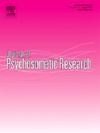The impact of panic disorder on severe asthma and chronic rhinosinusitis with nasal polyps: A comparative clinical study
IF 3.5
2区 医学
Q2 PSYCHIATRY
引用次数: 0
Abstract
Objective
We cross-sectionally compared outpatients with severe asthma (SA), chronic rhinosinusitis with nasal polyps (CRSwNP), or both, grouped by current, past, or absent panic disorder (PD) history, to assess clinical differences. Published data on this topic are limited in SA and absent in CRSwNP.
Methods
Between February and March 2024, outpatients at the Personalized Medicine Asthma and Allergy Clinic, Humanitas Research Hospital, were consecutively recruited during follow-up visits. All were previously enrolled in the SANI (Severe Asthma Network Italy) or RINET (Rhinosinusitis Italian Network) registries. Participants completed a self-report survey assessing sociodemographics, lifestyle, medical history, asthma control, nasal obstruction, physical symptoms, cognitive-emotional factors, and quality of life. Provisional diagnoses of PD (PPD) and, additionally, major depressive episode (PMDE) were based on the Patient Health Questionnaire (PHQ). Analyses included Kruskal-Wallis, Dunn's post-hoc, and Fisher's exact tests with Holm's correction (α = 0.05).
Results
Among 79 patients (58.2 % women), 7 (8.9 %) had current PPD and 12 (15.2 %) had past PPD. Four (5.1 %) had a PMDE. PPD significantly correlated with poorer asthma control, more severe nasal obstruction, increased dyspnea and physical symptoms, greater asthma-related catastrophizing, focus on bodily sensations, avoidance of activities, and reduced quality of life.
Conclusions
PPD is more prevalent in SA and/or CRSwNP than in the general population. Panic comorbidity links to greater respiratory severity and symptom burden, supporting screening and integrated care. The study is novel in including CRSwNP, advanced-treatment patients, evaluating current and past PPD, and exploring multiple previously unexamined clinical aspects. Further research is warranted.

惊恐障碍对严重哮喘和慢性鼻窦炎伴鼻息肉的影响:一项比较临床研究
目的:我们对患有严重哮喘(SA)、慢性鼻窦炎合并鼻息肉(CRSwNP)或两者兼有的门诊患者进行横断面比较,按当前、过去或无惊恐障碍(PD)病史分组,以评估临床差异。关于这一主题的已发表数据在SA中有限,在CRSwNP中缺失。方法于2024年2月至3月,在人道主义研究医院个性化医学哮喘和过敏诊所连续招募门诊患者进行随访。所有患者先前均在意大利严重哮喘网络(SANI)或意大利鼻鼻窦炎网络(RINET)注册中心登记。参与者完成了一项自我报告调查,评估社会人口统计学、生活方式、病史、哮喘控制、鼻塞、身体症状、认知情绪因素和生活质量。PD (PPD)和重度抑郁发作(PMDE)的临时诊断基于患者健康问卷(PHQ)。分析包括Kruskal-Wallis、Dunn的事后检验和Fisher的精确检验,并采用Holm的修正(α = 0.05)。结果79例患者(58.2%为女性)中,7例(8.9%)目前患有PPD, 12例(15.2%)过去患有PPD。4例(5.1%)有PMDE。PPD与较差的哮喘控制、更严重的鼻塞、增加的呼吸困难和身体症状、更大的哮喘相关灾难化、关注身体感觉、避免活动和生活质量下降显著相关。结论sppd在SA和/或CRSwNP中比在普通人群中更为普遍。恐慌共病与更严重的呼吸严重程度和症状负担有关,支持筛查和综合护理。该研究在纳入CRSwNP、晚期治疗患者、评估当前和过去的PPD以及探索多个以前未被研究的临床方面是新颖的。进一步的研究是有必要的。
本文章由计算机程序翻译,如有差异,请以英文原文为准。
求助全文
约1分钟内获得全文
求助全文
来源期刊
CiteScore
7.40
自引率
6.40%
发文量
314
审稿时长
6.2 weeks
期刊介绍:
The Journal of Psychosomatic Research is a multidisciplinary research journal covering all aspects of the relationships between psychology and medicine. The scope is broad and ranges from basic human biological and psychological research to evaluations of treatment and services. Papers will normally be concerned with illness or patients rather than studies of healthy populations. Studies concerning special populations, such as the elderly and children and adolescents, are welcome. In addition to peer-reviewed original papers, the journal publishes editorials, reviews, and other papers related to the journal''s aims.

 求助内容:
求助内容: 应助结果提醒方式:
应助结果提醒方式:


